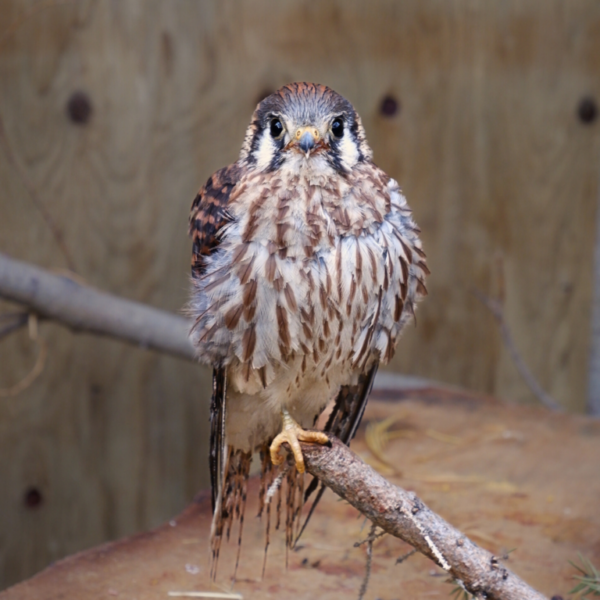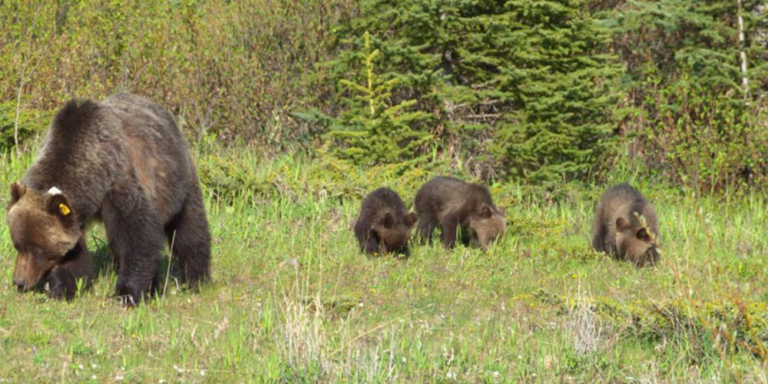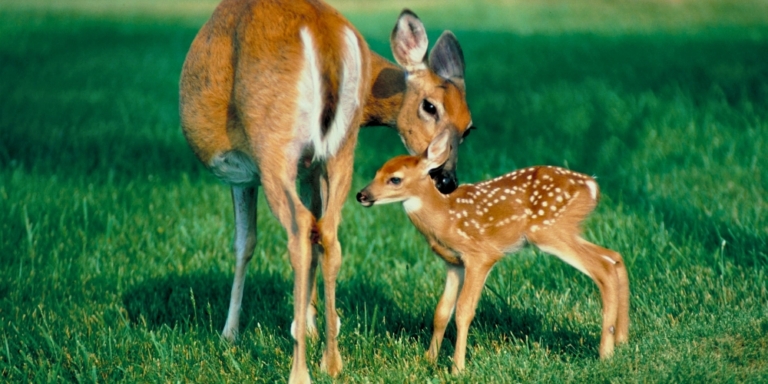
While most people were out trick or treating on Halloween, the Alberta Institute for Wildlife Conservation (AIWC) had its hands full capturing a black bear cub.
The young bear was found wandering the Town of Westlock with no mom.
According to Katrina Terrill, acting Executive Director for the AIWC, the cub was too thin to go into hibernation.
“We weighed the bear, and we actually found that although he looked very big, he only weighed 28 pounds…that’s very, very small even for a cub of this year,” said Terrill.
Cubs should be at least 60 pounds before they go into hibernation. This orphaned black bear cub was terribly underweight and in poor condition.
But thanks to the efforts of Fish and Wildlife officers and AIWC staff, the cub is recovering nicely.
Alberta Institute for Wildlife Conservation, located near Madden, rehabilitated a colourful cast of patients last year, including a wood frog and a trio of black bear cubs.
In total, the Institute rehabilitated and released more than 400 patients in a single year.
Teaching The Bear Necessities
Since he arrived at the AIWC, the adorable little black bear has become quite the celebrity.
During the AIWC’s annual “Give the Gift of Saving Wildlife” fundraiser, the Institute raised more than $100,000. An epic way to celebrate its 30th anniversary!


People were incredibly generous last year and helped the AIWC smash its goal of $85,000.
Terrill thinks the black bear cub deserves some of the credit!
“I think it’s definitely a possibility that our little bear helped us pull through and reach our goal. We can’t wait to return him to the wild. He has been a star, I would say, as far as public awareness goes,” said Terrill.
In addition to helping the AIWC raise funds, the cub is the superstar of the Institute’s upcoming educational video on black bear cubs, which is expected to be released on the AIWC YouTube channel this month.
The AIWC has many regular supporters, but Terrill claims the institute has seen an increase in the number of new people donating.
But you won’t hear any complaints from the institute.
Donations ensure the Institute can continue to care for and rehabilitate wildlife.
The Calm Before The Storm


Donations also help AIWC get ready for the busy spring and summer months.
“We always see a huge increase in babies and injured wildlife over the summer with all the migratory species coming into Alberta. We usually get about 2,000 animals every year, and the large majority come in during the summer,” said AIWC Communications Coordinator Rachel Swart.
In the spring, the AIWC takes in many baby animals whose parents have been killed or who have been abandoned.
AIWC could use all the help it can get, so every donation goes a long way and helps them cover expenses like food, medical care, and enclosure maintenance for wildlife.
“For this fundraiser, there were a lot of new donors, and honestly, there were a lot of smaller donors – there were a lot of people donating smaller amounts, and that was so helpful,” said AIWC Communications Coordinator Scottie Potter.
According to Potter, the rehabilitation for each patient costs up to $500 and can be especially expensive for long-term patients.
The Road To Recovery


AIWC‘s Halloween cub still has a ways to go before he can be released into the wild. But he isn’t the Institute’s only long-term patient.
AIWC is also caring for an American Kestrel, a wildfire survivor. But more than 1,600 animals brought to the AIWC last year sustained injuries from human disturbances.
Crashing into windows, barbed wire, and vehicle collisions were the most common injuries.
AIWC’s Halloween cub has come a long way from 28 pounds to over 70 pounds today.
“He is doing very, very well…He looks like a proper bear now,” said Potter.
The black bear cub is a celebrity, but every animal deserves attention.
In addition to donations, we can help AIWC by educating ourselves on local wildlife and doing what we can to minimize human disturbances.






